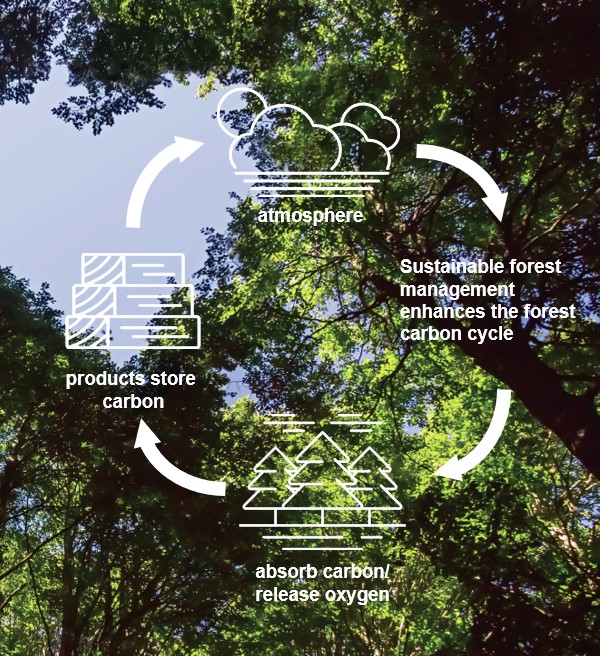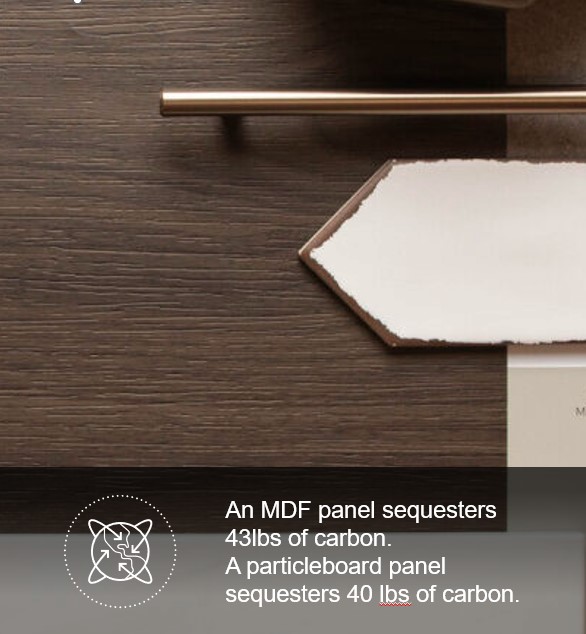Stories Of Sustainability: Wood Is Good
In this guest article, Genesis Products Vice President of Marketing & Development Erin Curtis provides key insights on how wood and composite wood impacts the environment. Erin serves as the Marketing Subcommittee Chair for the RV Industry Association’s Sustainability Committee.
 In the RV industry, protecting our natural environment connects directly to our customers’ love of the outdoors. In honor of Earth Day, we’re taking a closer look at one of our most common construction materials: wood.
In the RV industry, protecting our natural environment connects directly to our customers’ love of the outdoors. In honor of Earth Day, we’re taking a closer look at one of our most common construction materials: wood.
Did you know that wood and wood-based products are the ONLY climate positive building materials available? It’s true. This is because they store more carbon than is released in their production and use, helping to reduce greenhouse gases in the atmosphere.
The term “climate positive” describes any activity that goes beyond achieving net-zero carbon emissions, benefitting the environment by removing additional carbon dioxide from the atmosphere.
Here’s how it works:
- Wood sourced from managed forests help support healthy forest ecosystems
- Wood is the only material considered “infinitely renewable”
- Wood is Nature’s perfect carbon sink
- Trees absorb CO2 from the atmosphere as they grow.
- Half the chemical makeup of wood is naturally captured carbon.
- This carbon isn’t released into the atmosphere until it decomposes or burns.
- By building with wood, we keep that carbon stored for longer.
Here’s the interesting part: We can exponentially increase the benefits of building with wood when we use composite wood (MDF, particleboard, plywood) vs hardwood.
Composite wood fun facts:
- Composite wood panels begin life as a recycled product (and help use over 99% of every harvested tree)
- Composite wood has a carbon footprint of negative 1,290 kgs per cubic meter
- Composite wood sequesters 2x the carbon vs hardwood
- An MDF panel sequesters 43 lbs of carbon and a particleboard panel sequesters 40 lbs of carbon
The more composite wood we use, the more carbon we keep out of Earth’s atmosphere.
 Application opportunity: Cabinets and cabinet doors can be up to 80% of an RVs interior square footage. Utilizing composite wood in cabinetry applications can help maximize the amount of carbon sequestered in each unit. Plus, there are a range of durable laminates and finishes that can transform your interiors and achieve higher grades of consistency and elevated looks, from super mattte to high gloss.
Application opportunity: Cabinets and cabinet doors can be up to 80% of an RVs interior square footage. Utilizing composite wood in cabinetry applications can help maximize the amount of carbon sequestered in each unit. Plus, there are a range of durable laminates and finishes that can transform your interiors and achieve higher grades of consistency and elevated looks, from super mattte to high gloss.
To learn more about the benefits of building with composite wood, visit Climate Positive Now.
Looking for ways for your company can be more sustainable? Check out this presentation: Starting Your Sustainability Journey, A Roadmap, for specific examples of things your company can do to be more sustainable.
Please Sign in to View
Log in to view member-only content.
If you believe you are receiving this message in error contact us at memberservices@rvia.org.
